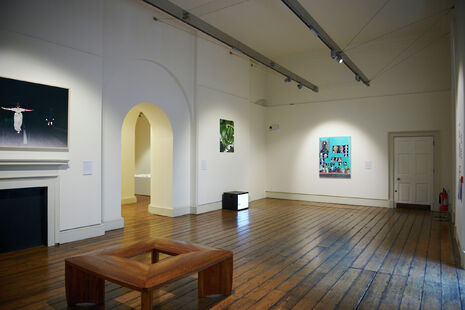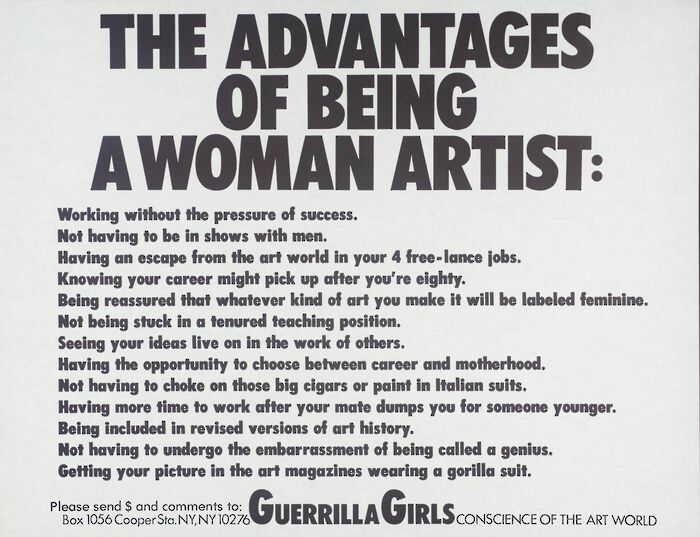Generations: Connecting Across Time and Place
Esmee Wright talks to Anna McGee about her curation course at the Courtauld Institute, and about what she learned while working on their group exhibition, Generations: Connecting Across Time and Place

For Anna McGee, learning to be a curator was the clear next step after finishing her History of Art degree at Cambridge last year. The Courtauld Institute’s Curating the Art Museum MA programme appealed because of its focus on the practical aspects of curation, including a group-organised exhibition.
The eleven curators-in-training started without even a title. Their only brief was to use works from the Arts Council Collection. Instead of finding a theme to fit the art they picked or vice versa, they developed both in parallel. Starting with a vague focus on ‘dialogue’, they looked at various works, including Measures of Distance, 1988, by Turner Prize nominee Mona Hatoum, a 15-minute film in which letters written in Arabic are shown superimposed over images of the artist’s mother showering.
More than just dialogue, the group realised that many of the works they were looking at tied together conversation between generations
The letters represent the communication maintained by the artist and her mother after being separated by the Lebanese Civil War. Recordings of conversations in Arabic between the two discussing her mother’s feelings and sexuality, as well as her husband’s objections, are interspersed with the artist reading the letters aloud in English. More than just dialogue, the group realised that many of the works they were looking at tied together conversation between generations, on a personal and a historical level. Measures of Distance is more than a conversation between a mother and daughter; it charts traumatic events and cultural histories.
Once the group had decided on twelve artists, they began the long process of streamlining. Each time the theme changed, they went back to the Arts Council Collection catalogues and found different artworks. In many ways this process was more difficult than the organisation of an exhibition in a ‘normal’ gallery would be; eleven cooks with eleven visions for one broth. Dividing responsibilities helped. Anna was in charge of budgeting, perhaps not the most interesting job at first blush, but an increasingly central role in artistic decision-making.
Even Alice Strang, Senior Curator at the National Galleries of Scotland, pointed to budgeting as a key skill in her talk at Cambridge in February this year. And, although the artwork for this exhibition was provided by the Arts Council Collection, keeping down costs proved interesting. Moving art is a tricky business, and with the Arts Council Collection’s sculptures being transported from their storage location in Yorkshire, coordinating and paying for it could become difficult.
It was during the installation itself that Anna felt she learnt the most about what it meant to be a curator; that was when all the little things that hadn’t been problems in their brainstorms appeared. The importance of lighting became apparent. For conservation reasons, photographs cannot be subjected to the same light intensity as oil paintings. In the first room, this meant the windows on the door had to be blacked out – potentially affecting footfall by giving the impression that the exhibition was closed.
This exhibition is about dialogue, between artists, between generations, between individuals and historical events
There were positives to learning how to set up an exhibit in a real space, especially one with as rich a history as Somerset House. Once the home of the General Register Office, these buildings had recorded the births, marriages and deaths for the whole of England, a wealth of family ties which is built upon in the second room. In the centre of this room lies a knitted figure, titled Baba Deep Thing by Mum, by Glasgow-based artist Hardeep Pandhal. The figure represents 18th-century Sikh martyr Baba Deep Singh who, according to accounts, continued to fight against Afghan soldiers after being beheaded, head in one hand and a knife in the other.
Pandhal’s mother used to tell her son this story when he was a child, and Baba Deep is a collaborative work between the artist, who knitted the head and knife, and his mother, who knitted the body. Pandhal’s mother speaks little English, and Pandhal speaks little Punjabi, so it is through knitting that mother and son bond and share their heritage. Baba Deep is a beautiful symbol of the ties between a family, against generational and language barriers.
Despite awful weather, the exhibition has been deservedly popular. In place of a feedback wall, the curators throw the question back at the viewer: How do you connect to other generations? Despite warnings, the wall has yet to be defaced by any unsavoury (read: phallic) drawings. People engaged with the question in fascinating ways; one visitor writing mathematical formulae they hope to pass down, another sketching a family tree, and others sharing anecdotes as they notice themselves turning into their parents.
This exhibition is about dialogue, between artists, between generations, between individuals and historical events. The interactive wall encapsulates this perfectly as it allows, and even encourages visitors to enter that dialogue. As the artworks have spoken to the viewer, so the viewer can talk back.
Generations: Connecting Across Time and Place is on at Somerset House, East Wing Galleries, and runs until the 4th of July 2019
 News / Uni members slam ‘totalitarian’ recommendation to stop vet course 15 January 2026
News / Uni members slam ‘totalitarian’ recommendation to stop vet course 15 January 2026 News / Cambridge bus strikes continue into new year16 January 2026
News / Cambridge bus strikes continue into new year16 January 2026 Science / Why smart students keep failing to quit smoking15 January 2026
Science / Why smart students keep failing to quit smoking15 January 2026 Interviews / The Cambridge Cupid: what’s the secret to a great date?14 January 2026
Interviews / The Cambridge Cupid: what’s the secret to a great date?14 January 2026 Comment / Will the town and gown divide ever truly be resolved?12 January 2026
Comment / Will the town and gown divide ever truly be resolved?12 January 2026









